Pilates for Dancers – How to Get Started (2023)
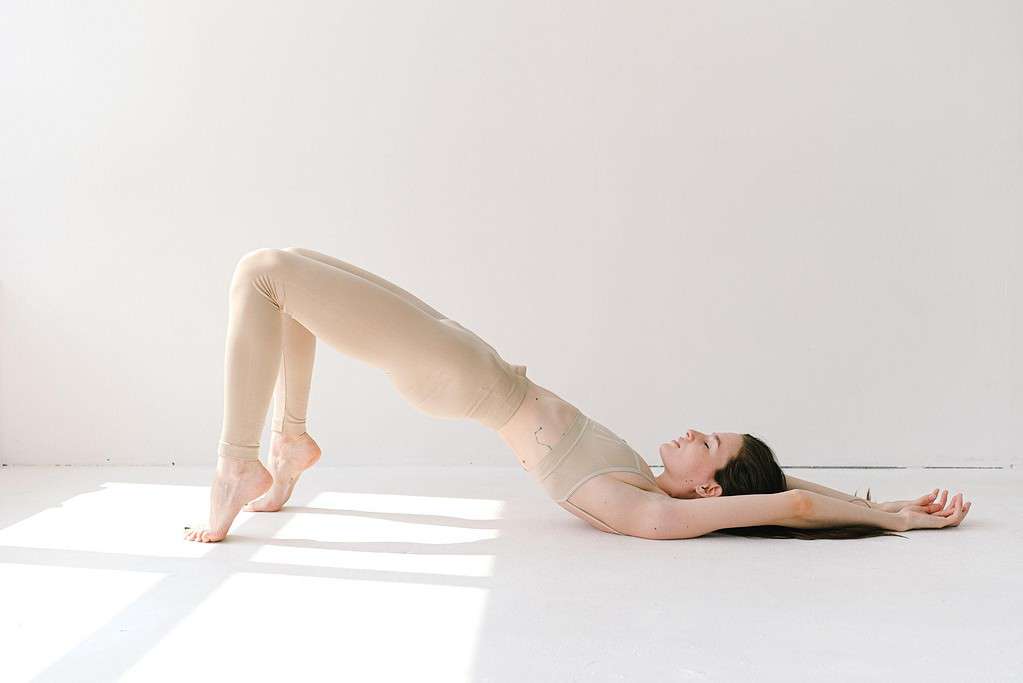
Pilates for Dancers is like a secret weapon.
Better yet, think of dance and Pilates like cookies and cream.
They complement each other.
Pilates helps a dancer develop strong, lean, and flexible muscles, without looking like the Incredible Hulk.
It also provides the strength needed to perform swift movements and the endurance required for slow, sustained sequences.
Trust me, it’s worth it!
In this blog post, I will show you the best Pilates exercises across all dance levels, and outline the top five benefits of Pilates for dancers.
Disclaimer: This blog provides general information and discussions about health and related subjects. The information and other content provided in this blog, or in any linked materials, are not intended and should not be construed as medical advice, nor is the information a substitute for professional medical expertise or treatment.
WHAT ARE THE TOP 5 BENEFITS OF PILATES FOR DANCERS?
While Pilates offers a range of benefits, the top five benefits for dancers include:
- Enhanced core strength
- Increased flexibility and a broader range of motion
- Stronger mind-body connection
- Strengthened muscles and injury prevention
- Improved posture
Pilates for dancers serves as the ultimate cross-training regime, allowing your body and mind to operate in perfect harmony.
In other words, movement that appears effortless!
A STRONGER CORE
A strong core serves as the vital link between the upper and lower body. It extends beyond mere abdominal strength.
Albeit, it does help get that bikini body ready for summertime!
Pilates exercises teach the muscles of the lower back, pelvis, abdomen, and hips to work together in a harmonious way.
These deep muscles are frequently underdeveloped or misused in dance.
No need to fear!
They can be retrained through Pilates. Pilates will help you engage these muscles in a more balanced and coordinated way.
IMPROVED FLEXIBILITY AND RANGE OF MOTION
Every dancer aspires to have a higher develope or an arabesque extending above 90 degrees.
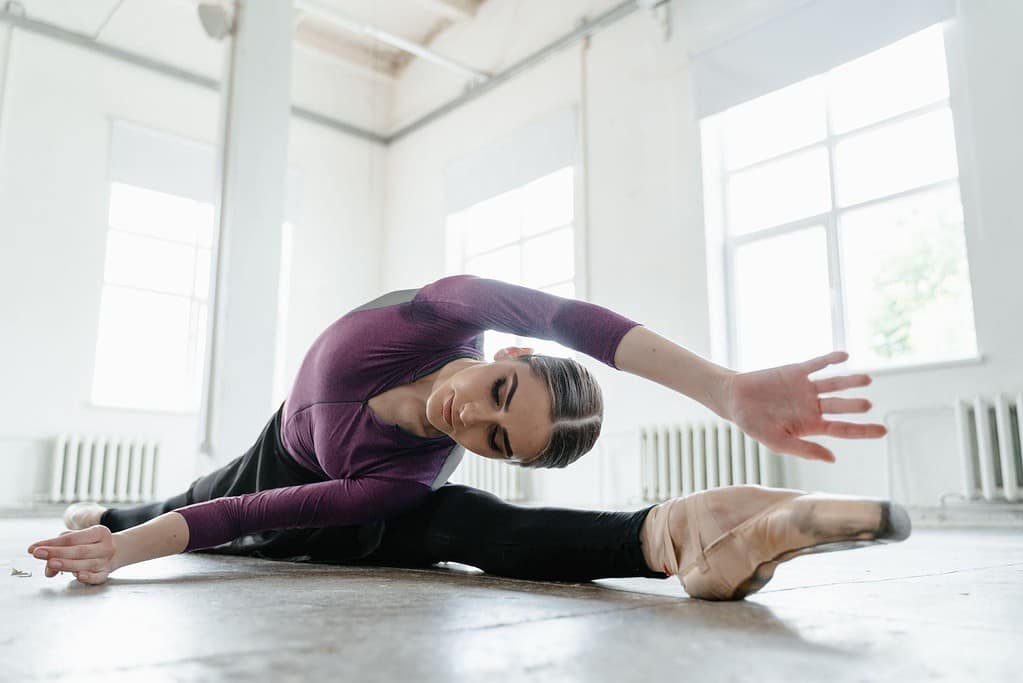
Whilst stretching is important for this, being overly flexible can also cause challenges.
This is where the importance of strengthening comes in.
Pilates doesn’t just improve flexibility, it helps those hypermobile dancers regain control over their movements.
No need to sit in oversplits all day!
MIND-BODY CONNECTION
By now, it’s clear that Pilates offers incredible benefits for the body.
But did you know, it also has a positive impact on the mind?
Pilates is not just a physical practice; it’s a pathway to connecting the body and the mind to work together. This connection creates muscle memory.
Over time, dancers won’t have to worry about engaging their core during pirouettes or holding their rotation from the deep rotator muscles.
It all becomes second nature.
Would you rather think about squeezing your glutes in place or nailing those 32 fouettes?
MUSCLE STRENGTHENING AND INJURY PREVENTION
Dance movements often involve positions and moves that are unnatural.
You don’t see the average person constantly working in a turned-out position, performing huge leaps and frequently standing on one leg for long periods of time (think Swan Lake corp de ballet).
These tendencies can lead to imbalances and an increased susceptibility to injury.
Unfortunately, dance training alone is usually not enough to prevent injury.
This is where the importance of cross-training comes in. Cross-training allows your body to withstand the physical demands of dance.
Let’s talk about my favourite type of cross-training. Pilates.
Pilates enhances the resilience of your ligaments, tendons, joints, and muscles. This reduces the risks of injury by strengthening and elongating muscles without putting any additional stress on the body.
Start incorporating Pilates into your routine now to prevent those unwanted injuries before it’s too late.
IMPROVED POSTURE
Hunched shoulders? Granny back? There is a cure.
Dancers are trained to hold their muscles in a certain way. While this may come naturally to some dancers, others may struggle with bad posture due to underdeveloped muscles and a weak core. This makes it challenging to maintain an ideal posture while dancing.
Pilates promotes good posture.
With Pilates, dancers can achieve proper alignment and gain better control over their core and back muscles.
This is particularly important while landing from big jumps or transitioning between lifts.
WHAT ARE THE BEST PILATES EXERCISES FOR BEGINNERS?
Our recommendation for the three best Pilates exercises for beginner dancers is ‘all 4’s knee-to-chest, ‘adductor leg lifts and circles’, and ‘side-lying développé’.
These beginner-friendly Pilates exercises are designed to boost core stability and leg strength.
Are you ready to elevate your dance training, and become a stronger dancer? Start with the following three exercises.
ALL 4’S KNEE-TO-CHEST
The ‘All 4´s Knee-to-Chest’exercise focuses on the abdominal and lower back muscles, improving core strength, balance, flexibility, and coordination.
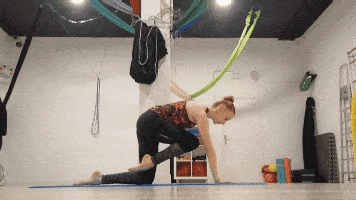
ADDUCTOR LEG LIFTS AND CIRCLES
The ‘Adductor Leg Lifts and Circles’ focus on toning and strengthening the inner thigh muscles (adductors) while simultaneously enhancing core stability and improving hip mobility.
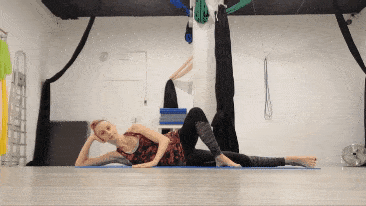
SIDE-LYING DÉVELOPPÉ
The ‘Side-Lying Développé’ targets the leg extension muscles, improving a dancer’s flexibility, strength, and range of motion.
This provides the strength and stability necessary for achieving a high développé.
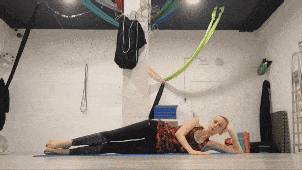
WHAT ARE THE BEST PILATES EXERCISES FOR INTERMEDIATES?
Our recommendation for the three best intermediate Pilates exercises for dancers is ‘dead bug’, ‘upper back lift arms to 5th’, and ‘clam’.
The best Pilates exercises for intermediates are those exercises designed to help shape your graceful dance physique, with a specific emphasis on stabilising the core and toning the back and glutes.
Are you eager to move beyond the fundamental Pilates exercises and target the muscles frequently used in dance? Start with the following three exercises.
DEAD BUG
The ‘Dead Bug’ is a core-strengthening exercise that is highly effective for building core strength and stability and improving coordination.
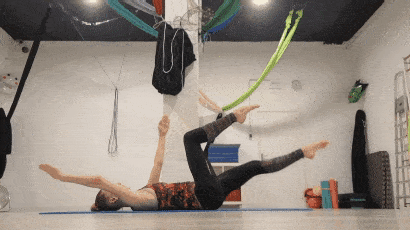
UPPER BACK LIFTS ARMS TO 5TH
The ‘Upper Back Lifts’ exercise strengthens the muscles of the upper back and improves posture, control, and coordination.
The arms working in the classical fifth position add extra resistance making it particularly beneficial for dancers.
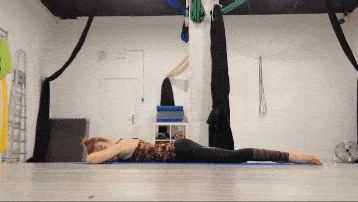
Optional: intensify the exercise by adding a magic circle between your hands to challenge the arm and back muscles.
CLAM
The ‘Clam’ exercise targets the hip and glute muscles, specifically strengthening the hip abductors, which are essential for hip stability and leg movement.
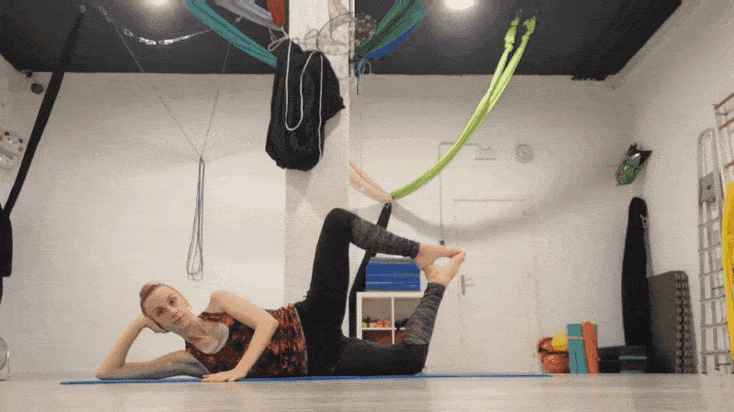
Optional: tie a resistance band above your knees for added resistance.
WHAT ARE THE BEST PILATES EXERCISES FOR PROFESSIONALS?
Our recommendation for the three best Pilates exercises for professional dancers is ‘double leg lowers’, ‘single leg bridge’, and ‘arabesque lifts’.
Now that you’ve got a solid grasp on several different Pilates exercises and are eager to gain that extra edge in your dance training, these advanced Pilates exercises will target the muscles in the abdominals, glutes, and hamstrings.
Get ready to feel the burn!
DOUBLE LEG LOWERS
The ‘Double Leg Lowers’ exercise works towards strengthening the core, particularly the lower abdominals, and challenges the stability of the pelvis and lower back.
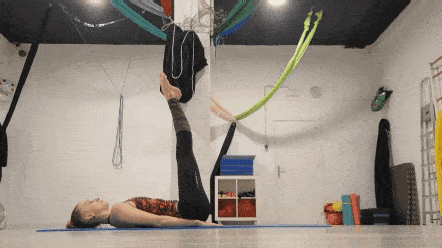
Optional: place a mini ball between your ankles to work the inner thighs.
SINGLE LEG BRIDGE
The ‘Single-Leg Bridge’ targets the glutes, hamstring, and lower back, while also improving core stability.
It also helps to correct muscle imbalances between the left and right sides of the body.
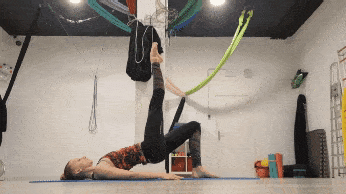
ARABESQUE LIFTS
The ‘Arabesque Lifts’ exercise is performed in the dancer’s arabesque position. It strengthens and lengthens the hamstrings while enhancing balance, core strength, and flexibility.
This exercise is ideal for dancers looking to improve their arabesque.
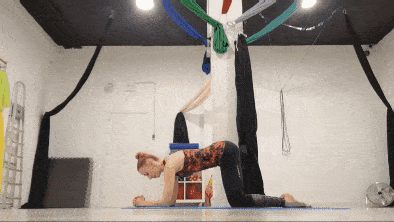
GETTING STARTED – BASIC PILATES EQUIPMENT
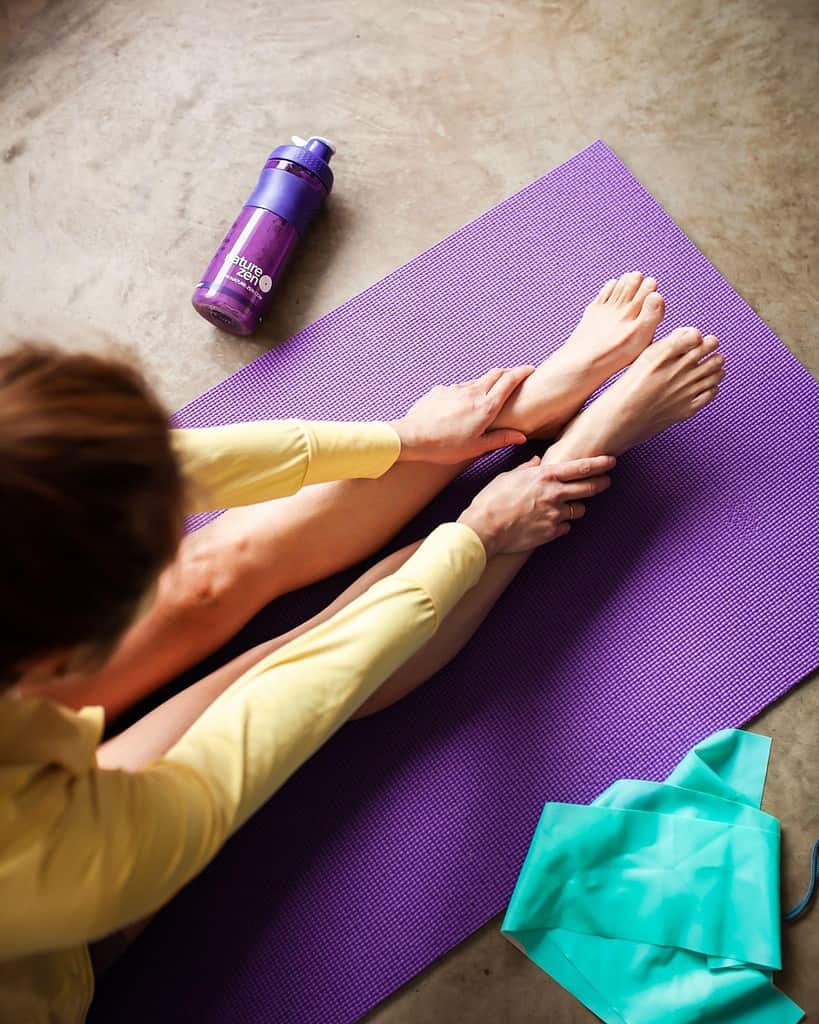
Don’t know where to start?
Embarking on your Pilates journey doesn’t have to break the bank.
In fact, all you really need is a quiet space, a comfortable mat, and just a few simple pieces of equipment to get a fantastic workout.
So pull out your mat, inflate your mini ball, select the resistance band that suits your needs, and start squeezing that Pilates ring for a full-body workout.
PILATES MAT
Pilates mats are used to perform a wide range of Pilates exercises, allowing for a comfortable and supportive surface that exercises that involve lying down, sitting, or kneeling.
MINI BALL
Mini balls introduce resistance into Pilates exercises, many of which promote the engagement of the pelvic floor and deeper muscles of the body, to build stability and proper alignment.
A great all-around piece of equipment, the mini ball can be used to:
RESISTANCE BANDS
Resistance bands are available in various levels of resistance.
They’re an excellent tool to incorporate into a variety of exercises; using tension to develop strength.
Try placing a resistance band around your thighs in a bridge or clam position to increase glute engagement.
PILATES RING/MAGIC CIRCLE
The Pilates Ring, also known as the Magic Circle, is another great piece of equipment that provides resistance and encourages proper form; both on the mat and in a standing position.
The Pilates Ring targets different muscle groups, such as the inner thighs (when placed between the legs), or the arms and back (when squeezed between the hands).
WRAP UP
Have I convinced you yet?
Incorporating Pilates into your routine leads to a profound body transformation. Specifically, it:
Pilates results in a strong, flexible, well-balanced body.
So grab that mat, and start today.
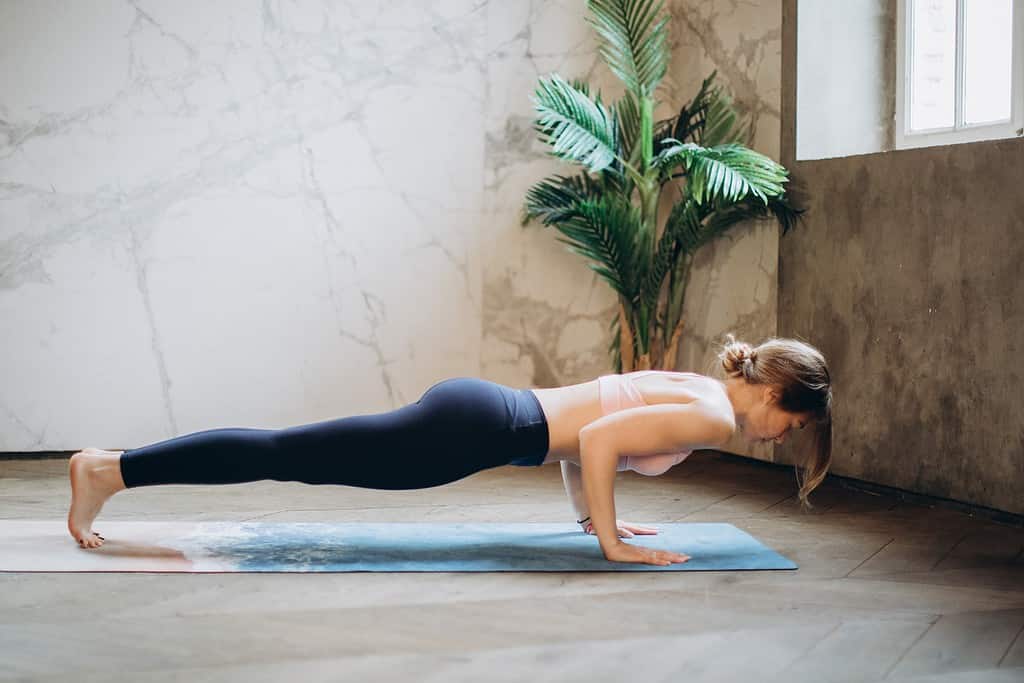
Final Comment: Pilates is a journey worth taking for any dancer looking to excel and thrive in their art form.






